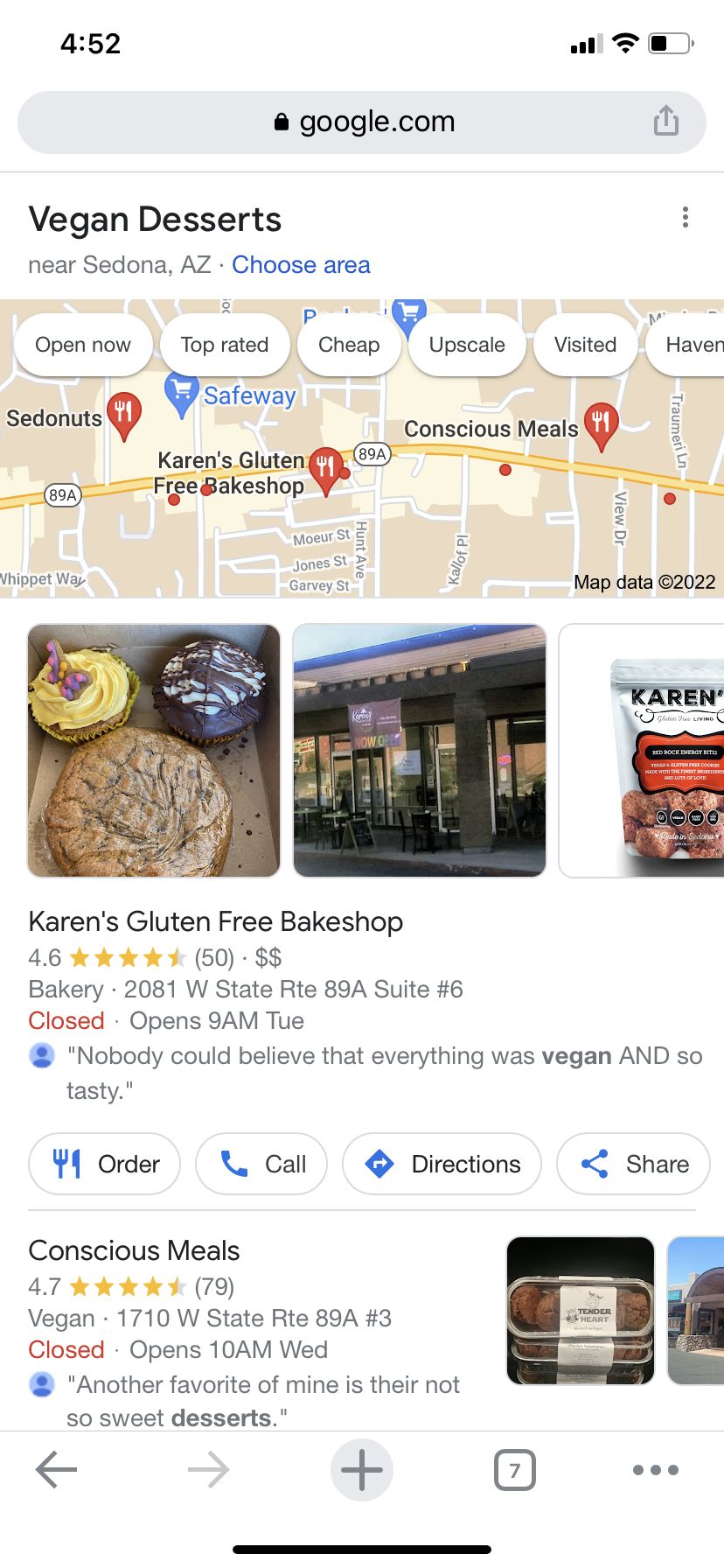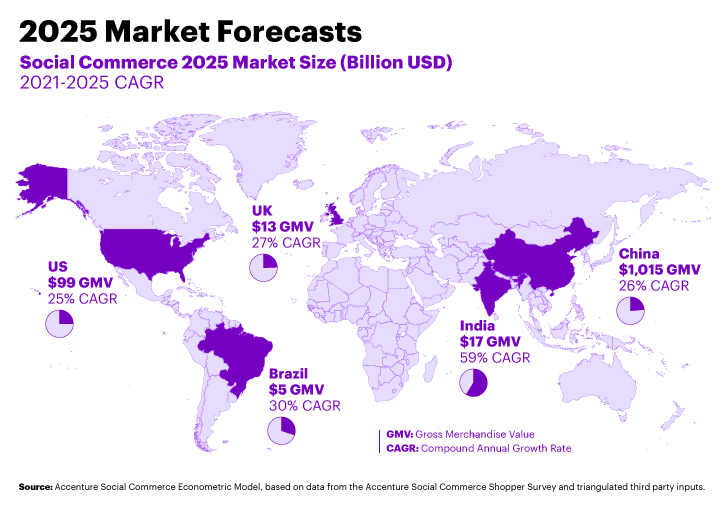In this week’s update, learn about the rapid growth of social commerce; new local features on mobile including Local Guide tags and carousels; the role of citations in local ranking; preparing for retail in the metaverse; new restrictions for Google Business Profile owners and managers; and the social media statistics marketers need for 2022.
Social Commerce Projected to Triple by 2025
A new report from Accenture projects that commerce linked to social media will grow at three times the rate of traditional commerce and will reach $1.2 trillion by 2025. Social commerce is currently a $492 billion global industry. Growth is largely expected to be driven by Gen Z and Millennials, who will account for 62% of all social commerce spending.
Social commerce is defined as commerce driven by discovery of products on social platforms such as Facebook and Instagram. Driven in part by shifting habits during the pandemic, social platforms have become for many users the central hub through which they experience the internet, from news to entertainment to education. So too, social media is transforming the way people buy and sell products.
Countries like China are leading the way; on one day in October 2021, two top live streamers in China sold $3 billion in products, three times Amazon’s total daily average. Successful social commerce, according to the report, is driven by engaging content and experiences as well as the power of networks to connect influencers and shoppers with common interests. By 2025, social commerce is projected to make up 25% of the e-commerce market in the U.S.
New Local Guide Tags: Review Category, Geography, and Follow Link
Barry Schwartz has gathered up some examples of local search results on mobile that contain features that are either new or not yet widely seen (the first example comes from a Twitter post of mine):
- In review lists for local businesses in the Google Maps app, Google is displaying icons that indicate how many reviews a Local Guide has written for certain types of business or in certain geographical areas. For instance, you might see that a reviewer has written 27 barbecue restaurant reviews, or 15 reviews in New Orleans. Some users also see a prominent “Follow” CTA, prompting you to follow that Local Guide and see their content in your Updates tab.
- Users are also observing that in mobile search results, Google is displaying carousels instead of a local pack in results for searches like “group friendly dining” and “Korean massage.”
In addition, Mike Blumenthal noted on Twitter that large image carousels rolled out in the mobile version of the local pack at the same time as the recent desktop local pack redesign. The larger carousel appears when you begin scrolling through any smaller carousel in a local pack result.

Larger image carousel for Karen’s Gluten Free Bakeshop
The Role of Citations in Local Ranking
We know that the relative importance of local citations has diminished in recent years, in the opinions of most local SEO experts. But do citations still matter? That’s the question raised by Miranda Miller in a column at Search Engine Journal. Miller points to various surveys that still attest to the importance of citations for ranking; the most recent is a 2020 Moz survey that named citation consistency as the fifth most important ranking factor. She also cites Google’s help documentation on ranking in local search, which still states today that ranking is partly “based on information that Google has about a business, from across the web, like links, articles, and directories.” She concludes that even though they are a huge challenge to maintain, it’s still important to ensure that your listings on important non-Google sites are as accurate and up-to-date as possible, due to the indirect evidence they probably have on Google ranking as well as the native traffic they may generate in themselves.
Preparing for Retail in the Metaverse
Retailers have already begun making investments in the metaverse of the future, according to an article on Street Fight by Stephanie Miles. She interviews one of the founders of Immerss, a startup working with retailers to blend physical and digital experiences using a concept called “live commerce.” With live commerce, online shopping is augmented by real-time interaction, for instance with a guide who is armed with recommendations and product information. Live commerce makes use of chat and real-time video, and may boost conversions from 2% for typical e-commerce interfaces to 30%. Retailers like Coach and Ralph Lauren have begun building out virtual storefronts, anticipating the trend will grow more popular in the near future.
Google Adds Restrictions for New GBP Owners and Managers
As pointed out by Ben Fisher, Google has implemented some new guidelines for owners and managers who have recently been added to a Google Business Profile account. These new users will now have to wait seven days before they can make certain changes. In particular, users during this moratorium period cannot delete or undelete a listing; remove other owners or managers; or transfer primary ownership of a listing. They also cannot have primary ownership of a listing transferred to them by another user. Fisher speculated that the new regulations came about in order to stem the hijacking of listings.
Social Media Statistics for 2022
Search Engine Journal has published a compendium of social media stats for marketers to reference in 2022. Here are a few highlights:
- There are 4.55 billion social media users across the globe.
- Social platform signups grew nearly 10% in the last year, with 400 million people signing up to a platform for the first time.
- 84% of the U.S. population uses at least one social network.
- 57.6% of the world population uses social media.
- The top four social networks by global monthly unique users are Facebook (2.89 billion), YouTube (2.29 billion), WhatsApp (2 billion), and Instagram (1.39 billion).
- The top four networks by percentage of U.S. adults using them are YouTube (81%), Facebook (69%), Instagram (40%), and Pinterest (31%).
The writeup has plenty of additional stats, including deep dives on all of the top social platforms.
Damian Rollison
Subscribe to Local Memo!
Signup to receive Local memo updates and the latest on localized marketing, delivered weekly to your inbox.
